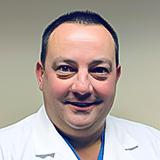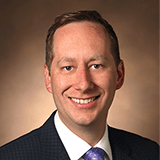Ventricular Assist Devices (VAD) - Vanderbilt University Medical Center; Department of CV Surgery: Faculty Forum
The Tammy Sparacino Journal Club delved into a critical and timely discussion on the efficiency and safety of Extracorporeal Membrane Oxygenation (ECMO) systems amidst the Coronavirus Disease 2019 (COVID-19) pandemic, in a session titled "Extracorporeal Oxygenation and Coronavirus Disease 2019 Epidemic: Is the Membrane Fail-Safe to Cross Contamination?" This discourse, rooted in a blend of cutting-edge research and clinical observations, sought to unravel the complexities surrounding ECMO's role in managing severe respiratory failure in COVID-19 patients, particularly focusing on the potential risks of viral cross-contamination through the membrane oxygenators.
The session commenced with an insightful overview of the principles behind ECMO therapy, emphasizing its deployment as a life-saving intervention for patients experiencing acute respiratory distress syndrome (ARDS) induced by COVID-19. The discussion underscored ECMO as a sophisticated form of support, leveraging cardiopulmonary bypass techniques to oxygenate the blood outside the body, thus allowing the lungs to heal. Despite its critical role, the conversation pivoted to a paramount concern: the theoretical risk of SARS-CoV-2, the virus causing COVID-19, crossing the ECMO system's membrane and thus potentially contributing to nosocomial transmission.
Central to the debate was the membrane's integrity. ECMO systems utilize highly specialized membranes designed to facilitate gas exchange while acting as a barrier to prevent blood-gas cross-contamination. The discourse meticulously examined the structural and functional aspects of these membranes, specifically polymethylpentene (PMP) membranes, renowned for their exceptional gas transfer capabilities and biocompatibility. Despite these advantages, the unique challenges posed by the COVID-19 pandemic necessitated a reevaluation of the fail-safe status of these membranes against viral penetration, especially under conditions of prolonged use and potential mechanical stress.
The conversation was enriched by data from recent studies and expert analyses, which provided insights into the virus's behavior and interaction with ECMO systems. The participants discussed the mechanisms of viral transmission, focusing on the size of SARS-CoV-2 particles and their capacity to infiltrate the micro-porous structure of ECMO membranes. The discussions were framed by the latest research findings, which suggested that while the risk of viral escape through ECMO membranes is theoretically possible, it remains low, contingent on the integrity of the membrane and the absence of physical damage or degradation over time.
Amid these technical deliberations, the forum did not overlook the human element. The discussions highlighted the ethical considerations and clinical decision-making processes involved in deploying ECMO for COVID-19 patients, weighing the benefits of extended respiratory support against the risks of potential viral spread within healthcare settings. The dialogue underscored the importance of rigorous monitoring for membrane integrity, timely replacement of ECMO components, and adherence to stringent infection control protocols to mitigate the risk of cross-contamination.
As the session drew to a close, the consensus underscored the indispensable role of ECMO in the arsenal against severe COVID-19-induced ARDS, while advocating for ongoing research and innovation to enhance the safety and efficacy of this vital therapeutic modality. The Tammy Sparacino Journal Club's exploration into the interplay between ECMO therapy and COVID-19 not only illuminated the complexities inherent in managing this unprecedented health crisis but also charted a course for future investigations aimed at safeguarding both patient outcomes and healthcare worker safety.
This session reflects a profound commitment to understanding and addressing the multifaceted challenges presented by the COVID-19 pandemic, embodying the relentless pursuit of knowledge and excellence in the field of extracorporeal therapy. Through such forums, the medical community continues to adapt, innovate, and evolve in its response to the ongoing health emergency, underscoring the significance of evidence-based practice and interdisciplinary collaboration in navigating the uncertainties of this global crisis.
In the John Ingram Knowledge Nuggets episode focused on "Surfactant," John Ingram delves into the complex and fascinating world of surfactants, substances pivotal in reducing surface tension between two mediums. This discussion not only unravels the scientific essence of surfactants but also bridges its relevance to practical applications, especially in medical treatments and industrial processes.
Surfactants, by definition, are agents that reduce the surface tension between two substances, such as between a liquid and a gas or between two liquids. This characteristic makes them incredibly useful in various domains, from medical therapies to household products. In medical terms, surfactants play a crucial role in respiratory treatment, particularly concerning pulmonary surfactants in the lungs. Pulmonary surfactants are essential for breathing, as they increase lung capacity and compliance, facilitating easier gas exchange and preventing the collapse of the alveoli at the end of exhalation.
John Ingram highlights the diverse applications of surfactants beyond their biological importance. From detergents and emulsifiers in our daily cleaning products to their role in industrial processes like oil spill management, surfactants' versatility is underscored. The discussion brings to light how these substances have become integral to modern life, underscored by the surfactant industry's substantial market value, which has been projected to increase significantly over the years.
Moreover, the session delves into the structure of surfactants, explaining their amphiphilic nature, which allows them to possess both hydrophobic and hydrophilic properties. This dual nature enables surfactants to effectively lower surface tension, making them indispensable in medical therapies like treating Respiratory Distress Syndrome (RDS) in premature infants, where surfactant therapy can be lifesaving.
Through the "John Ingram Knowledge Nuggets," viewers are offered a concise yet profound exploration of surfactants, emphasizing their critical role in healthcare, particularly in enhancing respiratory functions and treating conditions like RDS. Ingram's presentation not only educates but also invites viewers to appreciate the broader impacts of surfactants in various fields, marking an enriching addition to the series' aim of broadening knowledge in an engaging and accessible manner.

John Ingram is a magna cum laude graduate from University of Texas, Texas Heart Institute and a board certified perfusionist currently specializing in adult perfusion

Matt Warhoover graduated Vanderbilt University with a Masters in Health Care Management. He also earned a masters in Perfusion Science from Milwaukee School of Engineering

Dr. Hoffman was born in New Orleans, Louisiana and was raised in Los Angeles, California. His undergraduate degree is from Rice University in Houston, Texas

Vanderbilt University Medical Center Cardiopulmonary Perfusionist · Responsible for Heart Lung Machine · ECMO Patients – transport, bedside monitoring